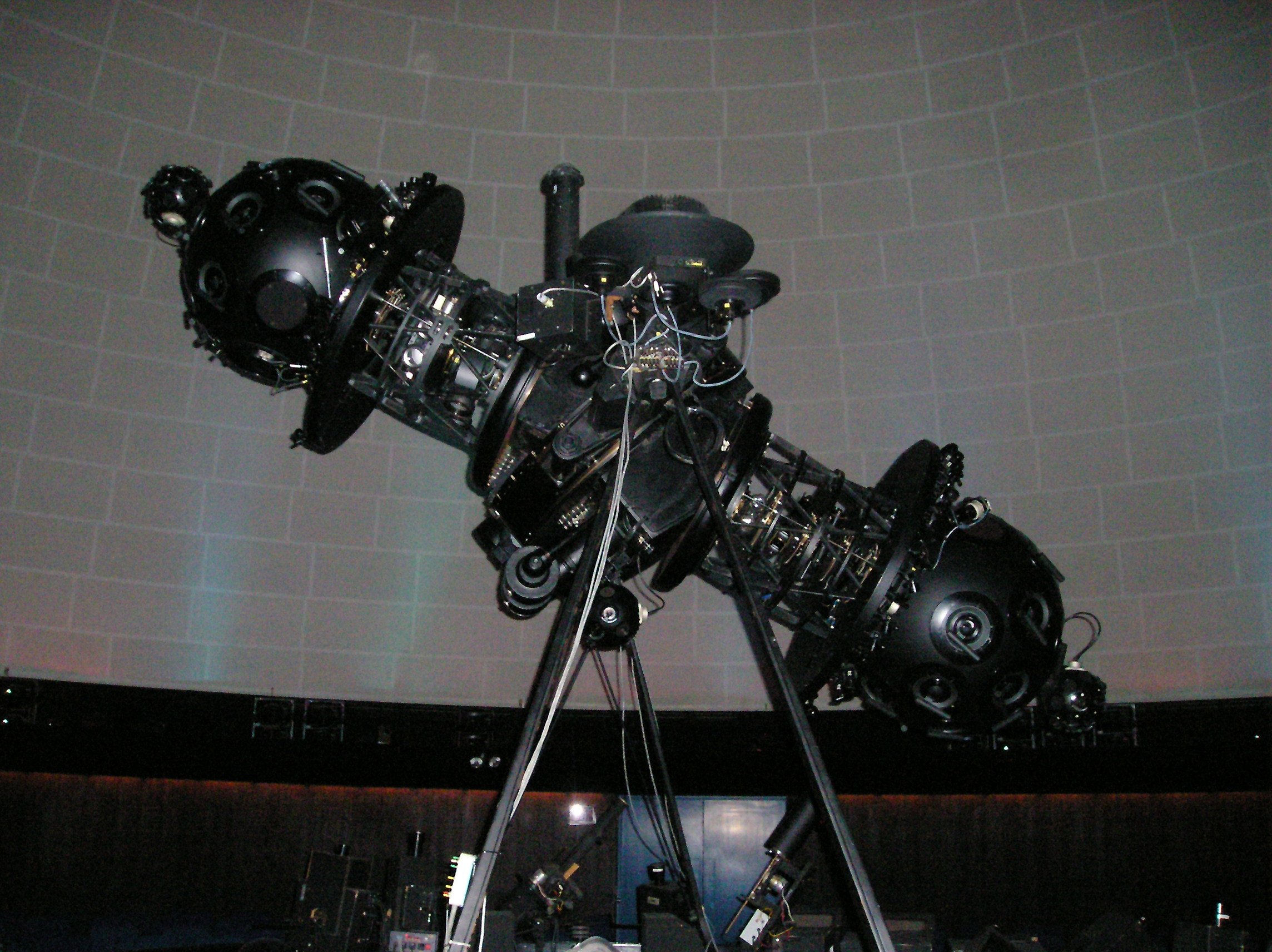Zeiss projector on:
[Wikipedia]
[Google]
[Amazon]



 A Zeiss projector is one of a line of
A Zeiss projector is one of a line of
Acquainted with the Night: Excursions Through the World After Dark
'. Bloomsbury Publishing USA; 2005 ited 14 October 2011 . p. 278–279. Zeiss projectors are designed to sit in the middle of a dark,
Zeiss Planetariums
Planetarium projection Carl Zeiss AG



 A Zeiss projector is one of a line of
A Zeiss projector is one of a line of planetarium projector
A planetarium projector, also known as a star projector, is a device used to project images of celestial objects onto the dome in a planetarium.
Modern planetarium projectors were first designed and built by the Carl Zeiss AG, Carl Zeiss Jena co ...
s manufactured by the Carl Zeiss Company.
Main models include Copernican (1924), Model I (1925), Model II (1926), Model III (1957), Model IV (1957), Model V (1965), Model VI (1968), Spacemaster (1970), Cosmorana (1984), Skymaster ZKP2 (1977), and Skymaster ZKP3 (1993).
The first modern planetarium projectors were designed and built in 1924 by the Zeiss Works of Jena, Germany.Christopher Dewdney. Acquainted with the Night: Excursions Through the World After Dark
'. Bloomsbury Publishing USA; 2005 ited 14 October 2011 . p. 278–279. Zeiss projectors are designed to sit in the middle of a dark,
dome
A dome () is an architectural element similar to the hollow upper half of a sphere. There is significant overlap with the term cupola, which may also refer to a dome or a structure on top of a dome. The precise definition of a dome has been a m ...
-covered room and project an accurate image of the star
A star is a luminous spheroid of plasma (physics), plasma held together by Self-gravitation, self-gravity. The List of nearest stars and brown dwarfs, nearest star to Earth is the Sun. Many other stars are visible to the naked eye at night sk ...
s and other astronomical object
An astronomical object, celestial object, stellar object or heavenly body is a naturally occurring physical entity, association, or structure that exists within the observable universe. In astronomy, the terms ''object'' and ''body'' are of ...
s on the dome. They are generally large, complicated, and imposing machines.
The first Zeiss Mark I projector (the first planetarium projector in the world) was installed in the Deutsches Museum
The Deutsches Museum (''German Museum'', officially (English: ''German Museum of Masterpieces of Science and Technology'')) in Munich, Germany, is the world's largest museum of science museum, science and technology museum, technology, with a ...
in Munich in August, 1923. It possessed a distinctive appearance, with a single sphere of projection lenses supported above a large, angled "planet cage". Marks II through VI were similar in appearance, using two spheres of star projectors separated along a central axis that contained projectors for the planets. Beginning with Mark VII, the central axis was eliminated and the two spheres were merged into a single, egg-shaped projection unit.
History of development and production
The Mark I was created in 1923–1924 and was the world's first modern planetarium projector. The Mark II was developed during the 1930s by Carl Zeiss AG in Jena. Following WWII division of Germany and the founding of Carl Zeiss (West Germany) in Oberkochen (while the original Jena plant was located in East Germany), each factory developed its own line of projectors. Marks III – VI were developed in Oberkochen (West Germany) from 1957 to 1989. Meanwhile, the East German facility in Jena developed the ZKP projector line. The Mark VII was developed in 1993 and was the first joint project of the two Zeiss factories followingGerman reunification
German reunification () was the process of re-establishing Germany as a single sovereign state, which began on 9 November 1989 and culminated on 3 October 1990 with the dissolution of the East Germany, German Democratic Republic and the int ...
.
, Zeiss currently manufactures three main models of planetarium projectors. The flagship Universarium models continue the "Mark" model designation and use a single "starball" design, where the fixed stars are projected from a single egg-shaped projector, and moving objects such as planets have their own independent projectors or are projected using a full-dome digital projection system. The Starmaster line of projectors are designed for smaller domes than the Universarium, but also use the single starball design. The Skymaster ZKP projectors are designed for the smallest domes and use a "dumbbell" design similar to the Mark II-VI projectors, where two smaller starballs for the northern and southern hemispheres are connected by a truss containing projectors for planets and other moving objects.
List of planetariums that have featured a Zeiss projector
Between 1923 and 2011, Zeiss manufactured a total of 631 projectors. Therefore, the following table is highly incomplete.See also
* List of planetariums *Planetarium
A planetarium (: planetariums or planetaria) is a theatre built primarily for presenting educational and entertaining shows about astronomy and the night sky, or for training in celestial navigation.
A dominant feature of most planetariums is ...
* Planetarium Jena
* Walther Bauersfeld
References
External links
{{Commons category, Zeiss planetarium projectorsZeiss Planetariums
Planetarium projection Carl Zeiss AG